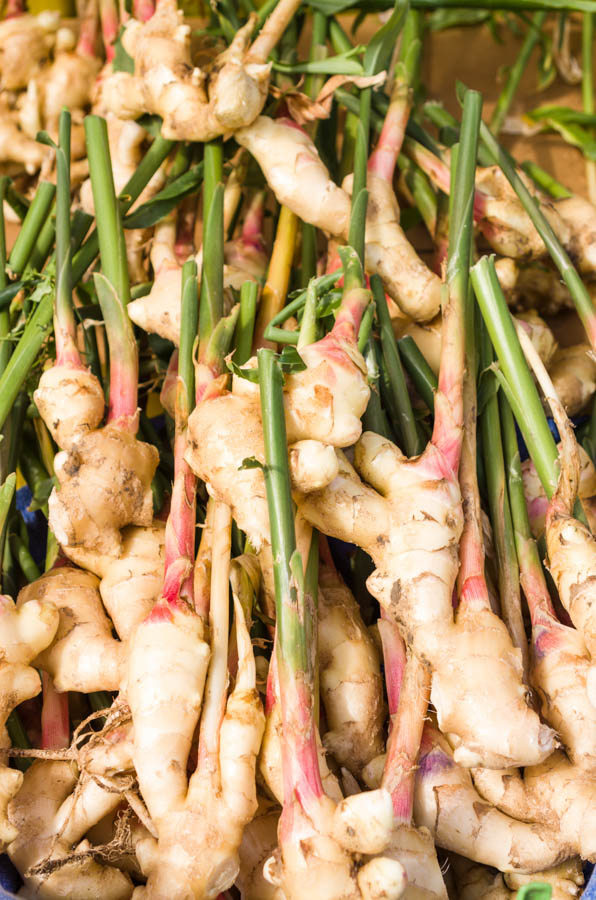Ginger: Growing and Harvesting for Culinary Use

GardenZeus receives commissions for purchases made through links in this post. There is no additional cost to you.
Ginger (Zingiber officinale) is a perennial plant with spear-like leaves and unremarkable yellow flowers that is typically grown as an annual plant for its edible root, or more precisely, its edible rhizomes. Ginger is grown commercially in subtropical and tropical climates, such as Hawaii, as ginger likes humid and warm but not hot conditions. Gardeners who do not live in subtropical and tropical climates can be successful growing ginger, although it is unlikely the ginger plants will be as productive. Garden chefs will revel in fresh ginger’s flavor and moist, smooth texture.
GardenZeus recommends growing ginger in containers: containers make it easier for home gardeners to approximate ginger’s preferred growing conditions, allowing gardeners to protect growing ginger from frost, extreme heat, wind and dry soil.
Start by selecting a plump piece of ginger with lots of “fingers” from the grocery store: cut rhizomes into pieces containing 3-4 eyes or buds (just like a potato) and let them cure, or dry for two days.
Select well-draining soil high in organic matter and calcium with a soil pH from 5.5 to 6.5. Don’t know how to determine soil pH? Read our recommendations at Tips for Testing Soil pH at Home with a Soil pH Meter.
Plant rhizomes with eyes facing upward and cover with 1 inch of soil. Plant rhizomes 15 inches apart. Add a light layer of mulch.
Ideal air temperature for growing ginger is 77° F with humidity. Ginger is sensitive to both frost and extreme heat. Bring containers inside when temperatures dip below 50° F. Place in partial shade location protected from wind. Gardeners in hot inland areas will want to place ginger in dappled shade.
Fertilize with a balanced fertilizer such as Dr. Earth Flower Girl Bud and Bloom Booster upon planting. Consider supplementing with calcium by crushing broken eggshells in container soil. Avoid using high nitrogen fertilizers which will likely produce too much leaf development at the expense of root development. Once the first shoots appear, reapply fertilizer regularly according to package instructions. Discontinue fertilizing when flowers emerge on above-ground plant.
Keep ginger moist, but do not allow soil to get soggy as rhizomes can rot. Ginger is not a drought tolerant plant! Reduce watering a few weeks before maturity.
Ginger can be harvested over time, beginning at 3 to 4 months after planting. Harvest a small amount of ginger by gently removing an area of soil and breaking off a portion, or finger of the rhizome. The remaining portion will keep growing. Harvest all ginger when leaves turn yellow and stems droop, or full maturity, as long as 10 months after planting.
Store in plastic bags in refrigerator. The most recently formed parts of the rhizome may have the most desirable flavor and best texture.
GardenZeus has customized growing information by plant and zip code. To get started, enter your zip code here.
Other articles of interest: